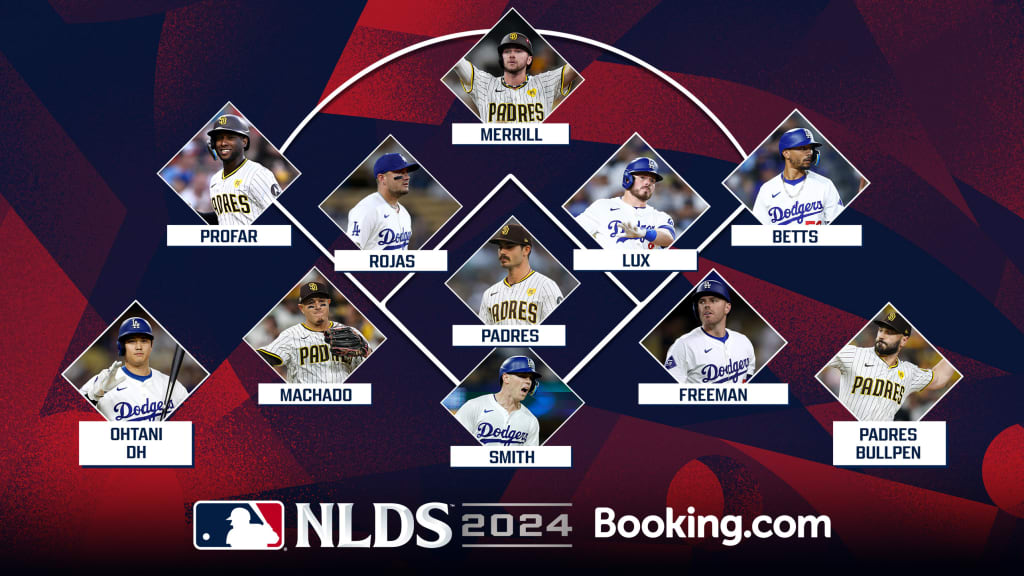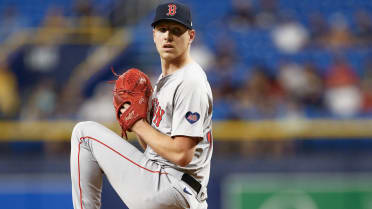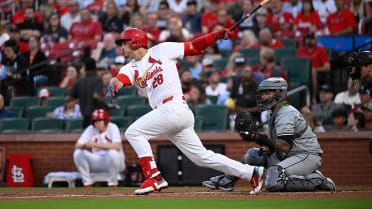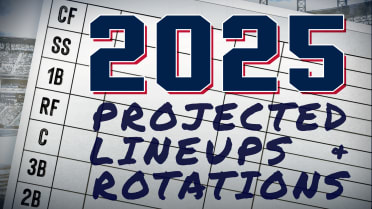Padres-Dodgers position-by-position breakdown

For the fifth consecutive season, the Dodgers will have to get through a National League West foe in the NL Division Series. And for the third time in that span, that foe is the Padres.
San Diego fell five games short of Los Angeles in the division standings this season despite a late, spirited run. But after quickly dispatching the Braves with a two-game NL Wild Card Series sweep at Petco Park, the club advanced to a postseason rubber match of sorts. In 2020, the Dodgers took out the Padres in the NLDS; in 2022, San Diego returned the favor.
This third matchup should be electric. While the Dodgers took the division title and earned a first-round bye, the Padres took the head-to-head series, 8-5, albeit with only a plus-6 run differential. Now, more than six months after they opened the season against each other in Seoul, South Korea, they meet again -- with quite a bit more on the line.
Let’s break it down, position by position.
Catcher
Will Smith made his second consecutive All-Star squad this summer, after signing a 10-year, $140 million contract extension on March 27. Kyle Higashioka is 34 and has never been a full-time Major League catcher, topping out at 246 plate appearances in his first season with San Diego. In other words, this looks like a mismatch at first glance.
Is it, though? Smith hit only .206/.295/.331 after the All-Star break -- although he did pick it up a bit in September -- and his minus-9 framing runs behind the plate were a career low. Higashioka, on the other hand, is coming off a career year with the bat (.739 OPS, 17 homers), and while he slumped in the final month, he also hit two huge homers in the Wild Card Series. We’ll still stick with Smith’s track record, but at this moment, this battle might be closer than you'd think.
Advantage: Dodgers
First base
Without shortstop Ha-Seong Kim (season-ending right shoulder injury), the Padres have largely shifted Xander Bogaerts to shortstop and Jake Cronenworth to second base. That opened up first, and while Luis Arraez can play there, the well-traveled Donovan Solano got most of the starts there down the stretch and both games of the Wild Card Series. The 36-year-old, on his sixth team in 11 seasons, has performed well for San Diego (.286 BA, .343 OBP), although he doesn’t offer much in the way of pop, especially for a first baseman.
The Dodgers, meanwhile, have a likely future Hall of Famer in Freddie Freeman. The eight-time All-Star has produced a 130 OPS+ or better for 12 consecutive seasons, including 2024 (143). Los Angeles' first-round bye was also huge, as it allowed Freeman to rest the right ankle injury he sustained on Sept. 26.
Advantage: Dodgers
Second base
The numbers offer very little daylight here between two players who were not originally supposed to be playing second this season. Cronenworth, as mentioned, moved back from first base during the season. Lux’s return to shortstop didn’t survive Spring Training thanks to severe defensive issues. Both wound up in similar spots, aside from total playing time:
Cronenworth: 99 OPS+, 17 HR, 2.1 fWAR in 656 PA; -4 Outs Above Avg. at 2B
Lux: 101 OPS+, 10 HR, 1.5 fWAR in 487 PA; -4 Outs Above Avg. at 2B
If there’s a gap here, it’s that Cronenworth tailed off in the second half (.650 OPS), while Lux picked things up dramatically (.899), making some adjustments to hit for more power. That’s enough to break the tie.
Advantage: Dodgers
Third base
A right oblique strain kept Max Muncy out of the Dodgers’ lineup for 80 games, but after returning on Aug. 19, he showed few signs of rust, slashing .245/.405/.520 with six homers and nearly as many walks as strikeouts. While Muncy’s presence brings the Dodgers a lot of stability at the hot corner, it’s still hard to stack him up against his one-time teammate, Manny Machado.
This wasn’t Machado’s best season overall, but from May 20 onward, he raked: .296/.344/.525 with 24 homers and 82 RBIs in 109 games. Even if Machado's typically stellar defensive numbers are down (0 Outs Above Average), he is still a star who can change a series on both sides of the ball.
Advantage: Padres
Shortstop
The Dodgers have a couple of solid options here, with Miguel Rojas, who was playing through a tear in his left adductor he sustained late in the season, expected to be in the lineup for the NLDS. Rojas enjoyed a resurgent season at age 35, posting a 113 OPS+, his career high outside of the pandemic-shortened 2020 season. He also brings strong defensive chops (plus-11 Outs Above Average at short), assuming the injury doesn’t hinder him too much. L.A. also can turn to Trade Deadline acquisition Tommy Edman, a multi-position switch-hitter and a capable defender with a contact-oriented bat.
On the San Diego side, Bogaerts certainly has more name recognition, and he hit much better in the second half (.763 OPS) compared to the first (.597). He can hold his own at shortstop, but he’s not the defender there that Kim (or Rojas) is. That’s the type of thing that could be magnified in a short series.
Advantage: Dodgers
Left field
As with second base, this is pretty much a statistical toss-up, this time between a Dodger enjoying a bounceback season and a Padre enjoying a long-awaited star turn.
Teoscar Hernández: 137 OPS+, 33 HR, 3.5 fWAR in 652 PA; -9 Outs Above Avg. in LF
Jurickson Profar: 134 OPS+, 24 HR, 4.3 fWAR in 668 PA; -6 Outs Above Avg. in LF
Hernández does boast a much longer history as an impact player, but we’ll side with San Diego by the narrowest of margins. While Hernández has a greater ability to change a game with one swing, Profar makes a lot more contact.
Advantage: Padres
Center field
If Rojas starts at shortstop for the Dodgers, Edman might be the top option in center. Fortunately, Edman excels out on the grass, too. L.A. also could turn to Andy Pages, who held his own this season as a rookie, particularly against left-handed pitching (.357/.396/.520 in 107 plate appearances).
Either way, the Dodgers can’t get the nod here, because 21-year-old Jackson Merrill has been an absolute revelation in 2024. Learning center field on the fly as a rookie, Merrill hit .292/.326/.500 with 24 homers, 90 RBIs and 16 steals while playing every day -- just three years after he was drafted out of high school. Lest you thought Merrill might not take to the big stage, he knocked three hits in two Wild Card Series games, including a double and a triple.
Advantage: Padres
Right field
It’s a shame that we can’t just put “Advantage: Both” here and call it a day, because you really can’t go wrong either way. Mookie Betts was his typically sensational self when healthy this year, batting .289/.372/.491 with 19 homers and 16 steals in 116 games. (Oh, and he converted to shortstop on the fly in Spring Training, then shifted back to right field midseason without breaking a sweat.)
Fernando Tatis Jr. also missed some time due to injury, but he was quite productive otherwise, at .276/.340/.492 with 21 homers and 11 steals in 102 games. This isn’t quite the same dynamic superstar we saw back in 2021, but Tatis is only 25 years old, and he has come up huge in the postseason early in his career. That includes this year’s Wild Card Series, when his Game 1 homer set the tone for a two-game sweep. Still, we can only pick one here, and of the two, Tatis isn’t the sure-fire Hall of Famer.
Advantage: Dodgers
Designated hitter
This spot features the players who finished first and second in the NL batting race this season, although that’s about where the similarities end between the Padres’ Arraez and the Dodgers’ Shohei Ohtani. With all due respect to Arraez, whose high-average, ultra-low-strikeout style is a delight to watch, let’s not beat around the bush. Ohtani is an athletic marvel, and in his one-season dalliance with being a full-time DH, he just went out and broke the 50-50 barrier while nearly tracking down Arraez to nab a Triple Crown. What will he have in store for his first postseason?
Advantage: Dodgers
Starting pitcher
On one hand, the Padres had to use Michael King and Joe Musgrove in the Wild Card Series while the Dodgers rested. Musgrove exited his Game 2 start with right elbow tightness and San Diego announced Friday that the right-hander has a UCL injury and will not be able to pitch during the rest of the postseason.
That said, the Dodgers’ starting pitching injuries have been relentless. The rotation picture is probably not as dire as it was a year ago, when it sunk the club in the NLDS against the D-backs. But it certainly isn’t ideal. Game 1 starter Yoshinobu Yamamoto flashed brilliance in four September starts after coming off the IL, but he hasn’t thrown more than five innings or 80 pitches since June 7. Los Angeles will hand Game 2 to Jack Flaherty, although his shaky final three starts (6.43 ERA) might cause a bit of concern. After that, things get much dicier. Walker Buehler never quite found his footing in his first season back from Tommy John surgery, and Landon Knack is a rookie with 69 MLB innings under his belt.
As much as the Padres will miss Musgrove in this series, they still have Dylan Cease and King as headliners and a couple of solid veteran options behind them. Yu Darvish put together a respectable September after returning from a long absence, and Martín Pérez excelled after he was acquired at the Trade Deadline, with a 3.46 ERA in 10 starts.
Advantage: Padres
Bullpen
The teams are much more evenly matched here. Both bullpens performed well this season, added firepower late along the way and give their managers good options from both sides of the mound. For the Dodgers, lefty Alex Vesia had a terrific year, Michael Kopech dominated after coming over at the Trade Deadline, and Blake Treinen, Evan Phillips and Daniel Hudson are a battle-tested veteran group.
The Padres, though, can be downright scary, having acquired Jason Adam, Tanner Scott and Bryan Hoeing to bolster a bullpen that wasn’t weak to begin with. That trio has delivered for San Diego and provides some insurance for All-Star closer Robert Suarez, who scuffled down the stretch. And that’s to say nothing of Jeremiah Estrada, an offseason waiver claim with a 99th-percentile strikeout rate.
Advantage: Padres
Prediction
The Dodgers have the type of lineup, led by the Ohtani-Betts-Freeman trio, that can absolutely mash its way into the NLCS. And there is a path for even this depleted Los Angeles pitching staff to take the team all the way. With that said, this series feels like it's set up for the Padres. Despite Musgrove’s injury situation, this team has the wealth of power arms to at least contain the Dodgers. If San Diego's bats can land some blows early, like they did in both Wild Card Series games, the Padres can begin to wear down the L.A. bullpen.
In a hard-fought and emotional series, San Diego’s pitching edge allows it to knock out its intrastate rival for the second time in three years.
Padres in four
Andrew Simon is an editor and writer for MLB.com.




